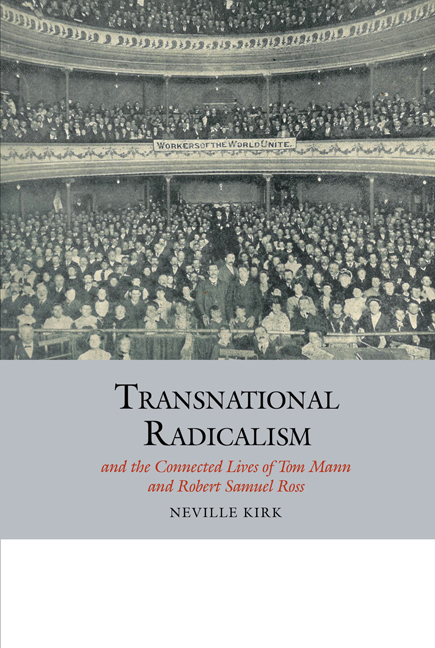7 - World War I and its Aftermath
from III - Womanhood, Whiteness and War
Summary
Introduction
Once World War I had broken out in August 1914 the international labour and socialist movements’ pre-war beliefs in international solidarity and opposition to war and militarism soon gave way to patriotic support, however pragmatic and resigned in some instances, for the various national war efforts. Organised workers in one country now found themselves engaged in military conflict with their erstwhile brothers, sisters and comrades in others. At the same time, as most recently demonstrated by David Swift and Robert Bollard for Britain and Australia respectively, dominant labour-movement, including socialist, and wider working-class patriotism by no means operated to the total exclusion of class feelings, allegiances and conflicts. Throughout World War I and beyond, patriotism, conservatism and class-based radicalism continued to interact in varied and its aftermath and at times complex ways. As noted earlier in this study, industrial and class conflicts did not disappear. They escalated in many countries from 1916 onwards, being particularly marked in Glasgow and other industrial parts of Scotland, in south Wales and in the Australian New South Wales General Strike of 1917. They became particularly acute and widespread during 1919 whether in Britain, Australasia, Europe or North America. The Russian Revolution of October 1917, moreover, had set off a wave of highly class conscious and anti-imperialist radical and revolutionary movements throughout the world. These, however, were met by a strong ebb tide of reaction. The latter was characterised not only by revitalised political conservatism and emergent fascism, but also racism, exclusion and protectionist nationalism. In short, this was a complex and contradictory period of time in which the forces of anti-militarism, peace, war, class, race, nation, empire, revolution and reaction interacted in extremely volatile ways. Despite the fact and example of the Soviet Union, the rise of modern, mass labour movements internationally and heroic struggles against fascism and the growing threat of another world war, conservative, reactionary, protectionist and exclusionary forces generally were in the ascendancy by the mid-1930s.
- Type
- Chapter
- Information
- Publisher: Liverpool University PressPrint publication year: 2017



